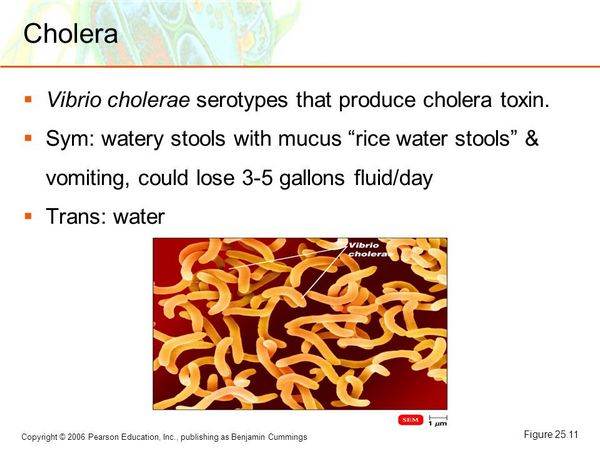Clinical Findings
Signs and Symptoms
Noncholera gastroenteritis is often associated with recent ingestion of raw or undercooked shellfish and often occurs in the summer or early fall in the United States. A typical presentation includes explosive diarrhea, low-grade fever and chills, and mild-to-moderate abdominal pain with cramping. The diarrhea is usually watery but may contain blood and neutrophils.

Dehydration is not as severe as that seen with Vibrio cholerae infections, but deaths may occur in children and the elderly. The incubation period is ~ 1 day but ranges from 5 h to 4 days. The diarrhea produced is probably secondary to a combination of exotoxin production and superficial invasion. The patients in which exotoxin production predominates may demonstrate a more watery stool. When mucosal invasion occurs, a dysenteric stool similar to that present in shigellosis may be seen. Secondary spread of these organisms is rare.
Laboratory Findings
Dehydration and electrolyte abnormalities are usually less severe than those present in cholera but may become profound in children and the elderly. Culture and biochemical identification of the isolate is the standard method of establishing the etiologic agent of disease. The key biochemical reactions for rapidly subcategorizing Vibrio species are listed in the Microbiology section. Many of the group characteristics are based on an organism’s ability to perform particular biochemical tests. Therefore it is important to remember that 1% NaCl supplementation is required for some organisms to adequately perform biochemical reactions. NaCl enrichment broths or tellurite-taurocholate-peptone broth may be used for enhanced recovery of these organisms.
Differential Diagnosis
See differential diagnosis for V cholerae infection.


